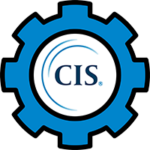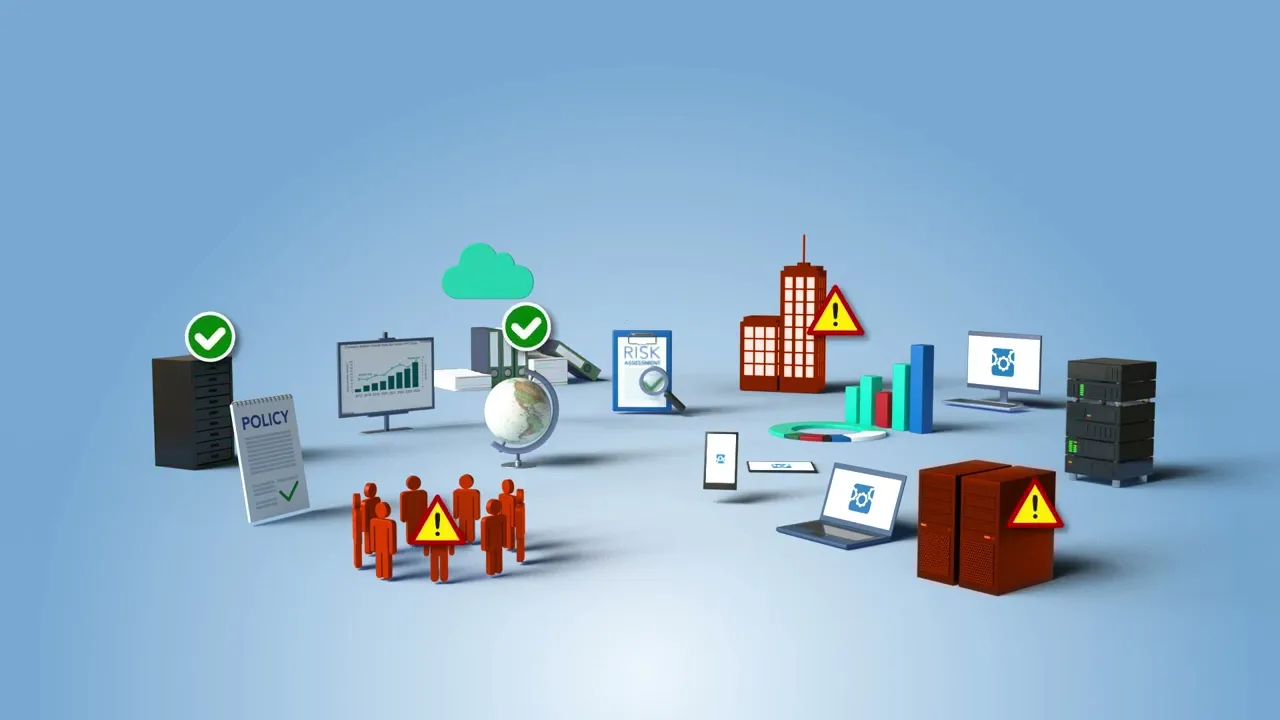Your Roadmap to Risk Reduction!
Table of Contents
ToggleThe Continuum GRC ITAM SaaS platform has hundreds of plugin modules available, such as:

CIS Critical Security Controls (CIS)
The CIS Critical Security Controls (CIS Controls) are a prescriptive, prioritized, and simplified set of best practices that you can use to strengthen your cybersecurity posture.
Modules include:
- CIS Critical Security Controls (CIS)
CIS Benchmarks & Compliance
The Center for Internet Security (CIS) has established certain guidelines for detecting, preventing, and responding to vulnerabilities around information security. These standards and regulatory requirements have been determined by a global consensus of security experts that is dedicated to improving cybersecurity.
The benchmarks apply to things like operating systems, network devices, cloud platforms, server software, and applications. The Center for Internet Security recognizes the need to stay atop of emerging threats; these CIS controls assist in protecting sensitive data.
Achieving compliance with these trusted CIS controls is adaptable to organizations of all sizes and types, with risk tolerance of all levels.
Benefits & Support of Achieving CIS Benchmarks
The globally-recognized standards of CIS benchmarks improve your security posture overall, simplifying the process of setting up and managing secure network configurations. This reduces your risk of data breaches and hardens the system overall.
CIS benchmarks are continually being updated by a community of experts who monitor new cyber threats and technologies; you’ll know what they know and be able to adjust accordingly. This free documentation is a cost-effective way to ensure you’re lowering your exposure to threats (a plus if yours is a non-profit organization). Plus, these CIS benchmarks align with regulations around NIST, HIPAA, and the like.
FAQ
How does a CIS compliance audit improve security posture?
A CIS compliance audit proactively identifies weaknesses, helps mitigate risks, and ensures that all systems are secure based on current best practices. This system hardening demonstrates a commitment to protecting sensitive data and network devices; a better security posture aligns with the requirements of both public and private organizations.
What does a CIS compliance audit involve?
It’s an independent review of your organization and how its security posture matches the standards and best practices set by the Center for Internet Security. They’ll do an onsite visit, review records, policies, and procedures that are related to your security controls and configuration. Interviews, checklists, and questionnaires are utilized.
Who needs a CIS controls audit?
Any organization that wants to harden its security posture will benefit from an audit around CIS benchmarks. These controls are flexible and scaleable. For those needing compliance with regulations like HIPAA or PCI DSS service , or those contractually obligated to certain cybersecurity standards, a CSI audit is helpful in demonstrating compliance.
How often should a CIS audit be performed?
A minimum of one audit each year is the standard recommended for maintaining best practices. However, depending on current or evolving cybersecurity threats and technology, more frequent audits may be required. If your organization has changed its IT infrastructure or handles extremely sensitive data, consider doing audits quarterly or monthly.
What is the role of the CIS Controls Implementation Guide?
This is the practical roadmap for implementing the security controls recommended by CIS. It helps an organization prioritize their critical devices, networks, and the like and harden their posture against cybersecurity threats. The guide simplifies this often-complex process with step-by-step controls to ensure compliance and security for any level of business.
How does CIS compliance help with regulatory requirements?
CIS controls align with many of the security requirements demanded by both public and private organizations. Because it’s a framework designed to secure your IT systems and data, it helps your company achieve compliance with the specific requirements outlined by NIST and HIPAA. CIS compliance provides the evidence for other kinds of audits.
What are you waiting for?
You are just a conversation away from putting the power of Continuum GRC to work for you.
Contact us using the form below or calling us at 1-888-896-6207 for immediate assistance.
About this standard
The CIS Critical Security Controls (CIS Controls), developed by the Center for Internet Security (CIS), is a prioritized set of cybersecurity best practices designed to help organizations protect their systems and data from cyber threats. The framework is widely adopted globally by organizations of all sizes to improve their cybersecurity posture and achieve compliance with various regulatory standards. Below is a compliance overview of the CIS Controls, focusing on their structure, purpose, and implementation requirements.
Purpose of CIS Controls
The CIS Controls aim to:
- Provide a prioritized, actionable framework to mitigate the most common cyber threats, such as malware, ransomware, and insider attacks.
- Simplify cybersecurity by focusing on a manageable set of controls that deliver high-impact risk reduction.
- Align with regulatory and compliance frameworks like NIST 800-53, ISO 27001, PCI DSS, and GDPR, enabling organizations to meet multiple compliance requirements efficiently.
- Support organizations in building a defensible cybersecurity program that is practical, scalable, and adaptable to evolving threats.
Key Features of CIS Controls
- Structure and Scope:
- The current version, CIS Controls v8 (released May 2021), includes 18 Controls organized into three Implementation Groups (IGs) based on organizational size, resources, and risk profile:
- IG1: Basic cybersecurity hygiene for small organizations or those with limited resources.
- IG2: Builds on IG1 for organizations with moderate resources and risk exposure.
- IG3: Advanced controls for organizations with significant resources and high-risk environments.
- Each Control contains specific Safeguards (153 total in v8) that outline actionable steps to achieve security objectives.
- Controls cover areas like inventory management, access control, data protection, incident response, and security awareness training.
- The current version, CIS Controls v8 (released May 2021), includes 18 Controls organized into three Implementation Groups (IGs) based on organizational size, resources, and risk profile:
- Key Controls (Examples from CIS Controls v8):
- Control 1: Inventory and Control of Enterprise Assets – Track and manage all hardware assets.
- Control 3: Data Protection – Protect sensitive data through encryption, access controls, and data loss prevention.
- Control 5: Account Management – Implement least privilege and strong authentication.
- Control 14: Security Awareness and Skills Training – Educate employees to reduce human-related risks.
- Control 17: Incident Response Management – Establish processes to detect, respond to, and recover from incidents.
- Alignment with Standards:
- The CIS Controls map to frameworks like NIST Cybersecurity Framework (CSF), ISO 27001, PCI DSS, HIPAA, and GDPR, enabling organizations to use CIS Controls as a foundation for compliance.
- Mappings are provided by CIS to streamline audits and demonstrate compliance with regulatory requirements.
- Audit and Assessment:
- Organizations can use the CIS Controls Assessment Module (CIS-CAT) to assess compliance with Controls and Safeguards.
- No formal certification exists, but organizations can undergo self-assessments or third-party audits to validate implementation.
- The CIS Controls are designed to be measurable, with clear metrics for tracking progress and effectiveness.
Compliance Requirements
To implement and maintain compliance with CIS Controls, organizations must:
- Select the Appropriate Implementation Group:
- Start with IG1 for basic hygiene, then progress to IG2 or IG3 based on risk and resources.
- Implement Safeguards:
- Deploy technical and procedural measures for each Control, such as firewalls, endpoint protection, and access controls.
- Tailor Safeguards to the organization’s environment, focusing on high-priority risks.
- Conduct Regular Assessments:
- Use tools like CIS-CAT or manual audits to evaluate control effectiveness.
- Perform gap analyses to identify and address deficiencies.
- Monitor and Update:
- Continuously monitor systems for compliance and update controls to address new threats or regulatory changes.
- Document Processes:
- Maintain documentation for policies, procedures, and evidence of control implementation to support audits.
CIS Controls in Practice
- Adoption: Used by organizations worldwide, including government agencies, enterprises, and SMBs. Notable adopters include federal agencies under the U.S. Cybersecurity Maturity Model Certification (CMMC), which aligns with CIS Controls.
- Integration with Tools:
- CIS provides tools like CIS-CAT Pro (for automated assessments) and CIS Hardened Images (pre-configured secure system images) to simplify implementation.
- Integrates with security tools like SIEMs, endpoint protection platforms, and vulnerability scanners.
- Benefits:
- Prioritized approach reduces complexity and focuses on high-impact controls.
- Cost-effective for organizations with limited resources, as IG1 provides a strong security baseline.
- Supports compliance with multiple frameworks, reducing audit redundancy.
- Limitations:
- Not a formal certification, so organizations may need additional steps to meet specific regulatory requirements.
- Requires ongoing commitment to monitoring and updating controls.
Recent Developments
- CIS Controls v8 (May 2021):
- Updated to address cloud computing, mobile devices, and remote work environments.
- Reduced from 20 Controls (v7.1) to 18, with a focus on modern threats like cloud misconfigurations and supply chain attacks.
- Introduced new Safeguards for secure DevOps and IoT environments.
- Community Support:
- The CIS Controls are developed with input from a global community of cybersecurity experts, ensuring relevance and practicality.
- CIS offers free resources, including mappings, implementation guides, and community forums.
- Version 8.1 (2022):
- Minor updates to clarify Safeguards and improve alignment with cloud and hybrid environments.
How Organizations Can Use CIS Controls
- Organizations:
- Adopt IG1 as a starting point for basic cybersecurity hygiene, then scale to IG2 or IG3 as needed.
- Use CIS tools (e.g., CIS-CAT, CIS Hardened Images) to automate assessments and configurations.
- Map Controls to regulatory requirements to streamline compliance efforts.
- Cloud Providers:
- Leverage Controls like Control 16 (Application Software Security) and Control 18 (Penetration Testing) to secure cloud services.
- Use mappings to demonstrate compliance with frameworks like C5 or FedRAMP.
- Auditors:
- Use CIS Controls as a benchmark for assessing an organization’s cybersecurity posture.
- Reference mappings to evaluate compliance with standards like NIST or ISO 27001.
Conclusion
The CIS Critical Security Controls provide a practical, prioritized, and flexible framework for organizations to strengthen cybersecurity and achieve compliance with global standards. By focusing on high-impact controls and offering scalable Implementation Groups, the CIS Controls are accessible to organizations of all sizes. Their alignment with frameworks like NIST, ISO, and GDPR makes them a valuable tool for streamlining compliance efforts. Organizations can access free resources and tools from the CIS website to implement and assess the Controls.
Amazing Benefits

